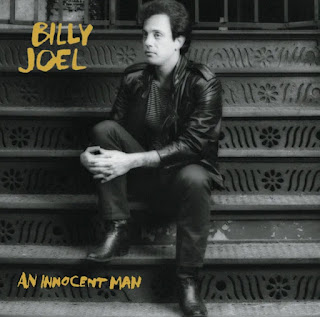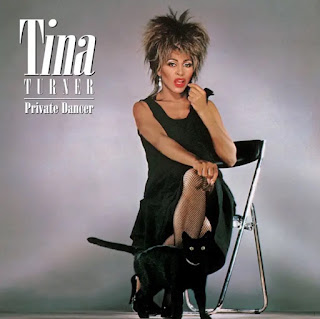BILLY JOEL - AN INNOCENT MAN
Publicació: Desembre de 1983
Llistes: EUA: #10 · Regne Unit: #8
“An Innocent Man” és un èxit de Billy Joel de l’any 1983, publicat com a tercer single del seu àlbum inspirat en el doo-wop i el R&B, també titulat “An Innocent Man”. La cançó és un sentit homenatge a la música de finals dels anys cinquanta i principis dels seixanta, i reflecteix l’admiració de Joel per artistes com Ben E. King i The Drifters. Musicalment influïda pels llegendaris compositors Leiber i Stoller, combina un estil nostàlgic amb una lletra profundament personal, sorgida de les experiències romàntiques de Joel mateix.
La lletra explica la història d’una dona ferida per relacions passades, que ara dubta a tornar a estimar. Joel es presenta com un home pacient i sincer —l’“home innocent”— que intenta guanyar-se la seva confiança i oferir-li una relació diferent de tot el que ha conegut. La cançó va arribar al núm. 10 de la Billboard Hot 100 i al núm. 8 de les llistes del Regne Unit.
Joel va gravar “An Innocent Man” després de l’àlbum anterior, “The Nylon Curtain”, molt més exigent tant emocionalment com tècnicament. Després d’aquell esforç intens, buscava una proposta més divertida i fresca, inspirada pel seu propi retorn alegre al món de les cites després del divorci. En aquell moment, Joel sortia amb Christie Brinkley i Elle Macpherson, i es va apropar a aquest disc amb un esperit de llibertat creativa. Més endavant va admetre que les cançons d’aquest disc van fluir amb facilitat, i que va voler forçar la seva tessitura vocal per aconseguir més dramatització, sabent que aquella capacitat no li duraria per sempre.
Tot i l’esperit lleuger de l’àlbum, Joel va mantenir uns estàndards molt alts a l’estudi. El productor Phil Ramone va explicar que, davant una actitud poc professional dels guitarristes habituals durant la gravació, va convidar el reconegut guitarrista Eric Gale a tocar sense dir ni una paraula. El gest va servir de recordatori silenciós del nivell d’excel·lència que s’esperava, i va restablir el respecte i el bon ritme de treball.
En molts sentits, “An Innocent Man” és molt més que una cançó: és un reflex de la reinvenció personal de Billy Joel, del seu amor per la música primerenca de rock i soul, i de la seva habilitat per combinar introspecció emocional amb un encant musical clàssic.
BILLY JOEL - AN INNOCENT MAN
Released: December 1983
Charts: US: #10 UK: #8
“An Innocent Man” is a 1983 hit by Billy Joel, released as the third single from his doo-wop and R&B-inspired album “An Innocent Man”. A heartfelt homage to the music of the late ’50s and early ’60s, the song reflects Joel’s admiration for artists like Ben E. King and The Drifters. Musically influenced by songwriting legends Leiber and Stoller, it combines nostalgic stylings with deeply personal lyrics, stemming from Joel’s own romantic experiences.
Lyrically, the song tells the story of a woman who, wounded by past relationships, is hesitant to love again. Joel positions himself as a patient and sincere partner—the “innocent man”—trying to earn her trust and offer something different from what she’s known. The song reach No. 10 on the Billboard Hot 100 and No. 8 on the UK Singles Charts.
Joel recorded “An Innocent Man” following the emotionally and technically demanding album “The Nylon Curtain”. Seeking something more playful and inspired by his own joyful return to dating after his divorce—he was seeing both Christie Brinkley and Elle Macpherson at the time—he approached this album with a sense of creative freedom and fun. Joel later admitted that songs from this record flowed easily, and he deliberately pushed his vocal range for dramatic effect, knowing his high register might not last.
Despite its lighthearted roots, Joel maintained high standards in the studio. Producer Phil Ramone recounted how he handled a lapse in professionalism from Joel’s guitarists during recording. By inviting renowned guitarist Eric Gale to play without saying a word, Ramone silently reminded the band of the discipline and excellence expected during sessions. The move worked—respect was restored, and the creative process got back on track.
In many ways, “An Innocent Man” is more than a song—it’s a reflection of Joel’s personal reinvention, his love of early rock and soul, and his ability to blend introspective storytelling with vintage musical flair.


























